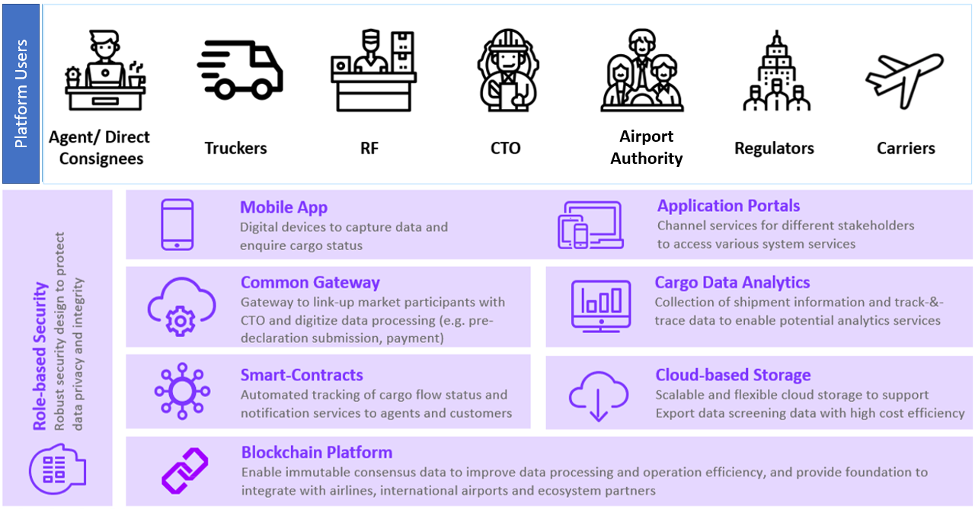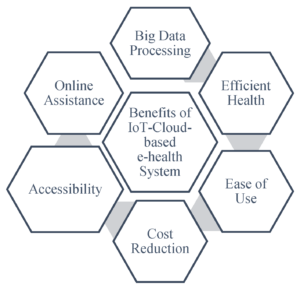Welcome to our comprehensive guide on containerized cloud architecture. In this article, we will delve into the intricacies of this cutting-edge technology, exploring its benefits, implementation strategies, and its impact on businesses worldwide. Whether you are a seasoned IT professional or simply curious about the latest advancements in cloud computing, this article will provide you with valuable insights and knowledge.
Understanding the Basics of Containerized Cloud Architecture
Containerized cloud architecture is a revolutionary approach to deploying and managing applications in a cloud environment. At its core, it involves encapsulating applications and their dependencies into lightweight, portable containers. These containers provide isolation, allowing applications to run consistently across different environments, regardless of the underlying infrastructure.
The Role of Containers
Containers are self-contained units that contain everything an application needs to run, including the code, runtime, system tools, and libraries. They provide a consistent and reproducible environment, ensuring that applications behave the same way regardless of the hosting environment. This portability makes containers an ideal choice for deploying applications in dynamic cloud environments.
Advantages over Traditional Virtual Machines
Containerized cloud architecture offers several advantages over traditional virtual machines (VMs). Unlike VMs, which require a full operating system to run each instance, containers share the host operating system, leading to reduced resource usage and faster startup times. Additionally, containers are highly scalable, allowing for efficient resource allocation and dynamic scaling based on demand.
Benefits and Advantages of Containerized Cloud Architecture
The adoption of containerized cloud architecture has numerous benefits for businesses across industries. Let’s explore some of the key advantages:
Improved Scalability and Resource Utilization
Containerization enables organizations to scale their applications more efficiently. With containers, it is possible to dynamically allocate resources based on demand, ensuring optimal utilization and cost-effectiveness. Containers can be easily replicated and distributed across multiple hosts, enabling horizontal scaling and seamless load balancing.
Enhanced Portability and Ease of Deployment
Containerized applications are highly portable, allowing them to run consistently across different environments, including public clouds, private clouds, and on-premises infrastructure. This portability eliminates the need for complex configuration and ensures that applications behave the same way regardless of the underlying infrastructure, simplifying deployment and reducing compatibility issues.
Easier Application Management and Maintenance
Containerized cloud architecture simplifies application management and maintenance. Containers encapsulate all dependencies, making it easier to package, distribute, and update applications. With container orchestration platforms like Kubernetes, organizations can automate application deployment, scaling, and monitoring, reducing the manual effort required for managing applications.
Improved Development and Testing Processes
Containers streamline the development and testing processes by providing developers with a consistent environment that closely matches the production environment. Developers can package their applications and dependencies into containers, ensuring that they work as intended across different environments. This consistency helps identify and resolve issues early in the development lifecycle, reducing time-to-market and improving application quality.
Implementing Containerized Cloud Architecture: Best Practices
Implementing containerized cloud architecture effectively requires following a set of best practices. Let’s explore some key considerations:
Selecting the Right Container Orchestration Platform
Choosing the right container orchestration platform is crucial for successful implementation. Platforms like Kubernetes, Docker Swarm, and Apache Mesos provide robust management and orchestration capabilities for containers. Consider factors like scalability, community support, and integration with existing infrastructure when selecting a platform.
Optimizing Resource Allocation and Utilization
Efficient resource allocation is essential for maximizing the benefits of containerized cloud architecture. By monitoring and analyzing resource usage, organizations can identify bottlenecks and optimize resource allocation accordingly. This includes considerations like CPU and memory allocation, disk I/O, and network bandwidth.
Ensuring Security and Compliance
Security is a critical aspect of containerized cloud architecture. Organizations must implement best practices to protect their applications and data. This includes securing container images, implementing access controls, and monitoring for vulnerabilities. Compliance requirements should also be considered, ensuring that containers adhere to relevant regulations.
Implementing Continuous Integration and Deployment
Continuous integration and deployment (CI/CD) practices play a vital role in containerized cloud architecture. By automating the build, testing, and deployment processes, organizations can streamline application delivery and ensure consistent quality. CI/CD pipelines can be integrated with container orchestration platforms, enabling seamless deployment and scaling.
Containerization in Hybrid Cloud Environments
Hybrid cloud environments, which combine public and private clouds with on-premises infrastructure, are increasingly popular among organizations. Containerized cloud architecture can play a pivotal role in achieving a seamless hybrid cloud environment. Let’s explore some considerations:
Integrating Containers with Existing Infrastructure
When adopting containerized cloud architecture in a hybrid environment, organizations must consider how containers integrate with existing infrastructure. This includes networking considerations, storage integration, and compatibility with existing applications. Tools and technologies like software-defined networking (SDN) and storage orchestrators can help bridge the gap between containers and traditional infrastructure.
Ensuring Data Consistency and Security
Data consistency and security are critical in hybrid cloud environments. Organizations must ensure that data is securely transmitted and stored across different environments. This includes implementing encryption, access controls, and secure data transfer protocols. Additionally, data management strategies should be in place to handle data replication, backup, and disaster recovery across hybrid environments.
Managing Complexity with Container Orchestration
Container orchestration platforms like Kubernetes can simplify the management of containers in hybrid cloud environments. These platforms provide centralized control and visibility, enabling organizations to manage and monitor containers across multiple clouds and on-premises infrastructure. Implementing container orchestration can help mitigate the complexity of managing containers in a hybrid environment.
Containerized Cloud Architecture: Use Cases and Success Stories
Containerized cloud architecture has found widespread adoption across various industries. Let’s explore some real-world use cases and success stories:
Web Application Deployment and Scalability
Containerized cloud architecture is well-suited for deploying and scaling web applications. By encapsulating each component of the application into containers, organizations can easily scale different parts of the application independently. This flexibility allows for efficient resource allocation and ensures smooth performance, even during high traffic periods.
Microservices Architecture
Microservices architecture, where applications are built as a collection of loosely coupled services, is a natural fit for containerized cloud architecture. Containers enable each microservice to be encapsulated and managed independently, providing agility and scalability. Organizations can easily update and scale individual microservices without impacting the entire application.
Machine Learning and Big Data Processing
Containerized cloud architecture is increasingly utilized for machine learning and big data processing workloads. Containers provide a consistent environment for running complex data processing tasks, ensuring reproducibility and scalability. By leveraging container orchestration platforms, organizations can efficiently manage clusters of containers for distributed data processing.
DevOps and Continuous Delivery
Containerized cloud architecture aligns well with DevOps principles and continuous delivery practices. Containers enable developers to package their applications and dependencies, ensuring consistent deployments across different environments. Combined with CI/CD pipelines, organizations can achieve rapid and automated application delivery, reducing time-to-market and improving collaboration between development and operations teams.
Overcoming Challenges and Limitations of Containerized Cloud Architecture
While containerized cloud architecture offers numerous benefits, it is essential to be aware of the challenges and limitations associated with its implementation. Let’s explore some common challenges and strategies for overcoming them:
Networking Complexity
Networking in containerized cloud architecture can be complex, particularly in distributed environments. Organizations must consider how containers communicate with each other and with external services. Implementing software-defined networking (SDN) solutions and leveraging container network interfaces (CNIs) can help simplify networking and ensure seamless communication between containers.
Storage Management
Efficient storage management is crucial for containerized cloud architecture. Containers require access to persistent storage for data persistence and sharing. Organizations must consider storage provisioning, data replication, and backup strategies. Container storage interfaces (CSIs) and container-native storage solutions can help address storage challenges and ensure data availability and durability.
Security Considerations
Containerized cloud architecture introduces unique security considerations. Organizations must ensure that container images are free from vulnerabilities and that access controls are in place to prevent unauthorized access. Implementing container image scanning tools, vulnerability management practices, and secure access controls can enhance the security posture of containerized environments.
Monitoring and Observability
Monitoring and observability are crucial for maintaining the health and performance of containerized cloud architecture. Organizations should implement robust monitoring solutions that provide insights into container performance, resource utilization, and application behavior. This includes leveraging metrics, logs, and tracing to gain visibility into containerized environments and identify potential issues proactively.
The Future of Containerized Cloud Architecture
Containerized cloud architecture continues to evolve, driven by advancements in technology and evolving business needs. Let’s explore some future prospects and trends:
Serverless Computing and Function
Serverless Computing and Function-as-a-Service (FaaS)
Serverless computing is gaining traction as a complementary approach to containerized cloud architecture. With serverless computing, organizations can focus on developing and running individual functions without the need to manage infrastructure. This event-driven model allows for highly scalable and cost-effective execution of code. As container orchestration platforms evolve, we can expect tighter integration with serverless computing frameworks, enabling organizations to combine the benefits of both approaches.
Edge Computing and Containerization
As organizations increasingly adopt edge computing to process data closer to its source, containerized cloud architecture can play a vital role in enabling edge deployments. Containers provide a lightweight and portable runtime environment, making it easier to deploy and manage applications at the edge. With the ability to run containers on edge devices or within edge data centers, organizations can achieve lower latency, reduced bandwidth usage, and improved performance for edge workloads.
Advancements in Container Orchestration Platforms
Container orchestration platforms like Kubernetes are continuously evolving to meet the growing demands of containerized cloud architecture. We can expect advancements in areas such as scalability, security, networking, and observability. These platforms will continue to add features and functionality to simplify the management of containers and enhance the overall efficiency and robustness of containerized cloud environments.
Integration with Artificial Intelligence and Machine Learning
The integration of containerized cloud architecture with artificial intelligence (AI) and machine learning (ML) is an exciting area of development. Containers provide a consistent and isolated environment for running AI and ML workloads, enabling organizations to leverage the power of these technologies at scale. We can expect further integration between containerization platforms and AI/ML frameworks, making it easier to build, deploy, and manage AI/ML models in containerized environments.
Containerized Cloud Architecture vs. Traditional Virtualization
While containerized cloud architecture offers many advantages, it’s important to understand how it compares to traditional virtualization. Let’s explore the key differences:
Resource Utilization
Traditional virtualization involves running multiple virtual machines, each with its operating system, on a single physical server. This approach can lead to higher resource utilization compared to running applications in containers. Containers share the host operating system, resulting in more efficient resource allocation and lower overhead.
Isolation and Security
Virtual machines provide strong isolation between different instances, as each VM runs on its own operating system. This isolation can enhance security, especially in multi-tenant environments. Containers, while providing isolation, share the host operating system, which may pose some security challenges. However, container security has improved significantly in recent years, with advancements in container image scanning, vulnerability management, and access control.
Flexibility and Portability
Containers offer greater flexibility and portability compared to virtual machines. Containers can be easily moved between different environments, including public clouds, private clouds, and on-premises infrastructure, without compatibility issues. In contrast, virtual machines may require additional configuration and adaptation when moving between environments.
Startup Times and Performance
Containers have faster startup times compared to virtual machines. Since containers share the host operating system, they have fewer dependencies to load, resulting in quicker application startup. Additionally, containers can scale horizontally more efficiently, allowing for rapid scaling based on demand.
Security Considerations in Containerized Cloud Architecture
Security is of utmost importance in containerized cloud architecture. Let’s explore some key security considerations:
Securing Container Images
Container images serve as the foundation for running applications in containers. It’s essential to ensure that container images are free from vulnerabilities and adhere to security best practices. Regularly scanning and updating container images, implementing image signing and verification, and using trusted image repositories are crucial steps in securing containerized environments.
Access Control and Authentication
Implementing proper access control mechanisms is vital to prevent unauthorized access to containers and the underlying infrastructure. Organizations should enforce strong authentication and authorization practices, such as multi-factor authentication, role-based access control (RBAC), and least privilege principles. Additionally, regular audits and monitoring can help identify and address any security gaps.
Isolation and Container Breakouts
Ensuring proper isolation between containers is crucial to prevent container breakouts and unauthorized access to other containers or the host system. Techniques such as namespace isolation, container runtime security, and secure container networking can help mitigate the risks associated with container breakouts and lateral movement within containerized environments.
Monitoring and Incident Response
Implementing robust monitoring and logging solutions is essential for detecting and responding to security incidents in containerized cloud architecture. Organizations should monitor container activity, network traffic, and system logs to identify any suspicious behavior or potential security breaches. Incident response plans and procedures should be in place to quickly address and mitigate security incidents.
The Role of DevOps in Containerized Cloud Architecture
Containerized cloud architecture and DevOps practices go hand in hand, enabling organizations to achieve greater speed, efficiency, and collaboration. Let’s explore the role of DevOps in containerized cloud architecture:
Automation and Infrastructure as Code
DevOps practices emphasize automation and treating infrastructure as code. With containerized cloud architecture, infrastructure can be defined and managed as code using tools like Dockerfiles and infrastructure-as-code frameworks. This enables version-controlled, reproducible infrastructure provisioning and deployment, reducing manual effort and ensuring consistency across environments.
Continuous Integration and Deployment (CI/CD)
Containerized cloud architecture aligns well with CI/CD practices, enabling organizations to achieve continuous integration, testing, and deployment. Containers provide a consistent environment for running application code, making it easier to build and test applications as part of the CI/CD pipeline. Container orchestration platforms like Kubernetes can further streamline the deployment process, enabling automated scaling, rolling updates, and monitoring.
Collaboration and Communication
DevOps promotes collaboration and communication between development and operations teams. Containerized cloud architecture encourages the use of shared container registries, version control systems, and collaboration platforms to facilitate seamless communication and collaboration. This enables teams to work together more efficiently, deliver applications faster, and respond quickly to changing business needs.
Continuous Monitoring and Feedback Loop
DevOps emphasizes continuous monitoring and feedback loops to ensure the health and performance of applications. With containerized cloud architecture, organizations can leverage monitoring tools and techniques to gain insights into container performance, resource utilization, and application behavior. This enables proactive identification of issues and facilitates continuous improvement through feedback loops between development, operations, and other stakeholders.
In conclusion, containerized cloud architecture is rapidly transforming the way businesses design and deploy their cloud infrastructure. Its ability to streamline efficiency, enhance scalability, and facilitate rapid application deployment makes it a highly sought-after technology in today’s ever-evolving digital landscape. By leveraging the insights and best practices shared in this article, organizations can unlock the full potential of containerized cloud architecture, driving innovation, and staying ahead of the competition.
As containerization continues to evolve and new advancements emerge, it is essential for businesses to stay informed and adapt their strategies accordingly. By embracing containerized cloud architecture, organizations can future-proof their cloud infrastructure and embark on a journey towards a more agile, scalable, and efficient IT landscape.



